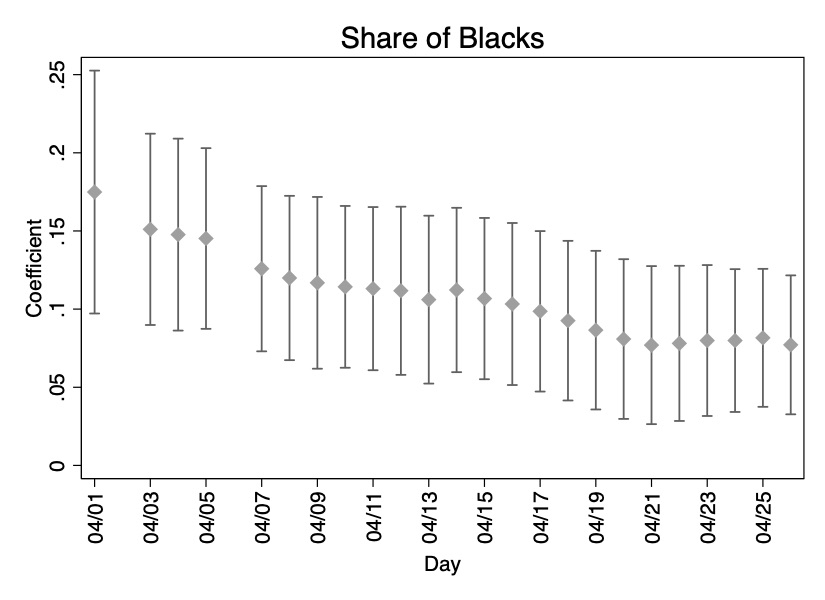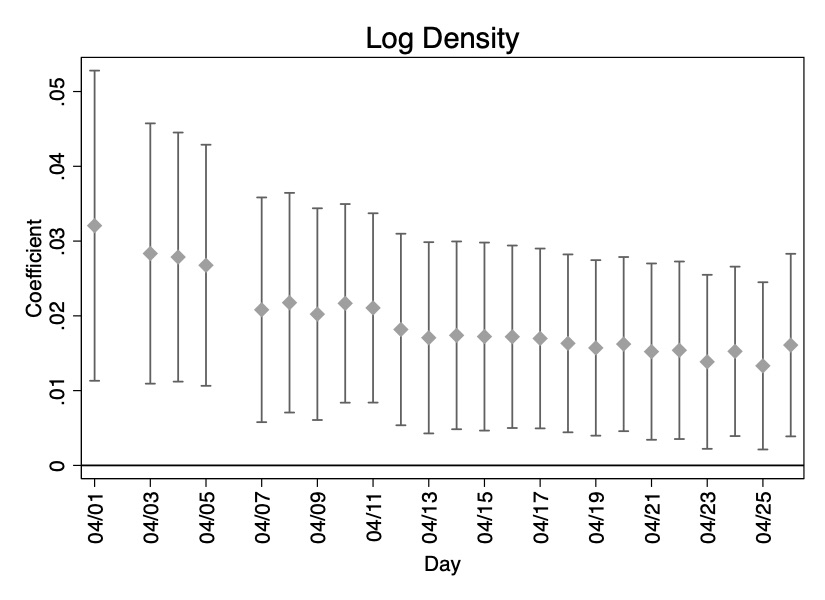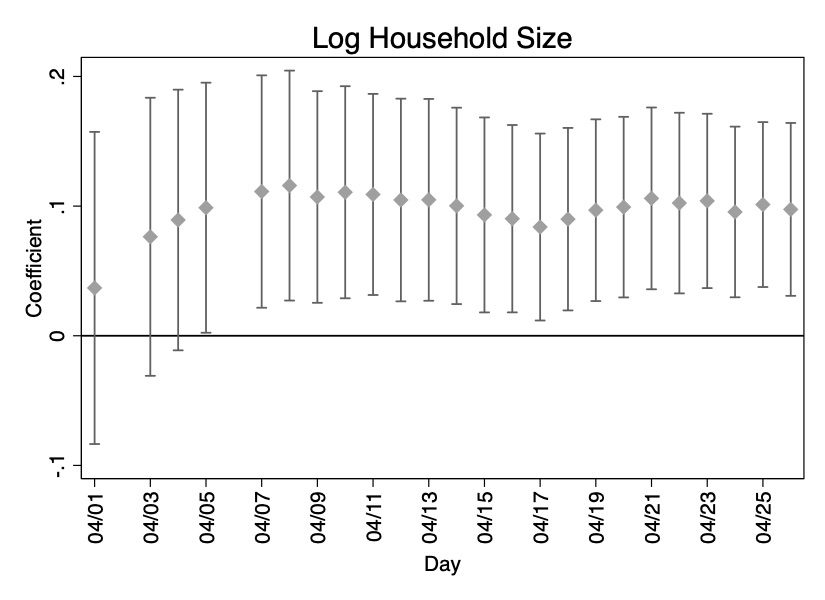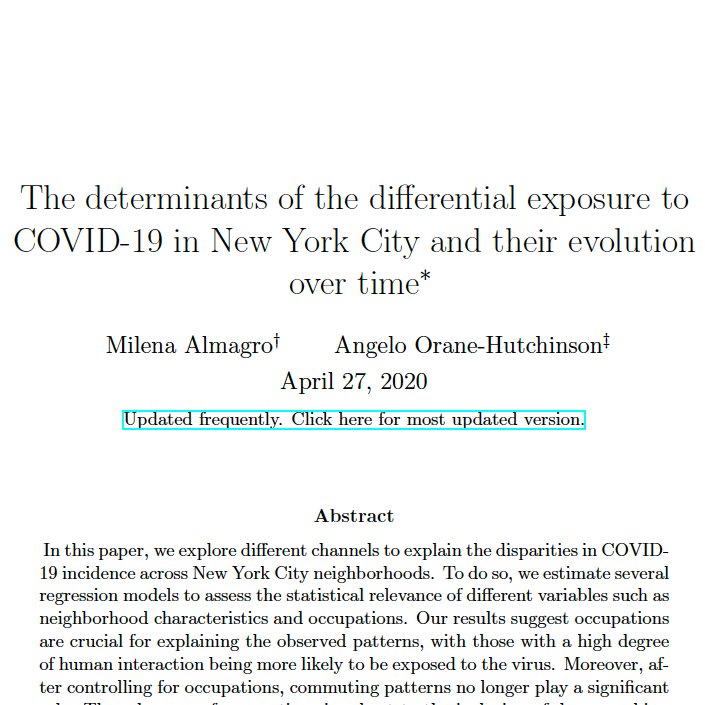Remember that short paper with @angelo_oh showing occupations were key to explain differences in COVID-19 exposure across NYC zip codes?
Now we have analyzed how the magnitude of those variables evolve over time under the effects of the stay-at-home order. Thread https://abs.twimg.com/emoji/v2/... draggable="false" alt="👇" title="Down pointing backhand index" aria-label="Emoji: Down pointing backhand index">
https://abs.twimg.com/emoji/v2/... draggable="false" alt="👇" title="Down pointing backhand index" aria-label="Emoji: Down pointing backhand index">
Now we have analyzed how the magnitude of those variables evolve over time under the effects of the stay-at-home order. Thread
1. The share of workers in occupations related to Transportation correlate positively with the fraction of positive tests. We argue that those jobs have high levels of human interaction. However, its magnitude decreases over time.
2. We find negative coefficients for the share of workers in Science fields with a trend also converging towards zero (imagine us researchers working from our caves  https://abs.twimg.com/emoji/v2/... draggable="false" alt="🤓" title="Nerd face" aria-label="Emoji: Nerd face">).
https://abs.twimg.com/emoji/v2/... draggable="false" alt="🤓" title="Nerd face" aria-label="Emoji: Nerd face">).
3. Racial disparities in the fraction of positive tests persist, although one could argue they are economically relevant. They also tend to decrease as days go by.
5. However, we do find a positive and significant coefficient that increases over time for the average household size.
We interpret these trends as the stay-at-home order being more helpful at mitigating contagion at work or in public spaces, but not so much as mitigating intra-household contagion.
Policy recommendations:
1. Targeting of protective gear, tests, and vaccines when those are scarce to the most vulnerable groups and highly exposed workers.
2. Temporal shelter to those households who live in reduced shared spaces.
1. Targeting of protective gear, tests, and vaccines when those are scarce to the most vulnerable groups and highly exposed workers.
2. Temporal shelter to those households who live in reduced shared spaces.
Full paper here -> https://m-almagro.github.io/Covid_and_Within_City_Inequality.pdf">https://m-almagro.github.io/Covid_and...

 Read on Twitter
Read on Twitter
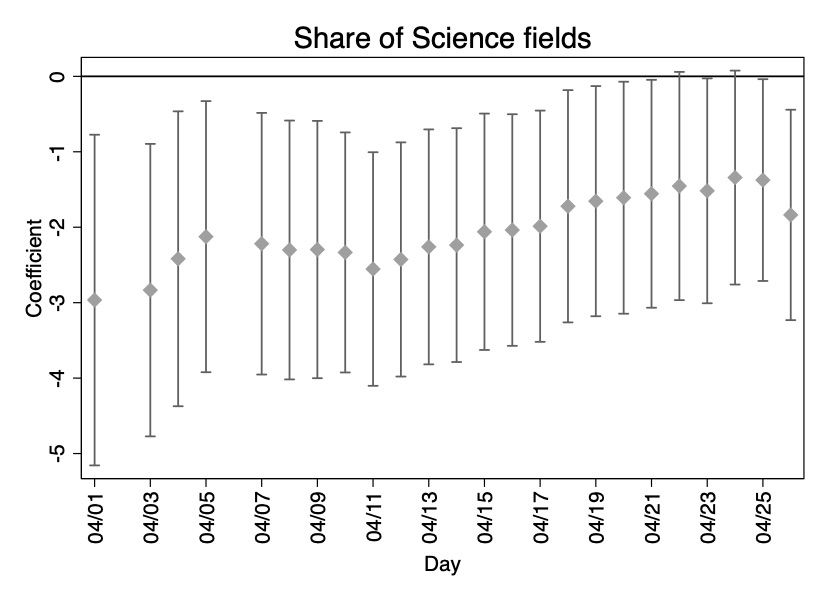 )." title="2. We find negative coefficients for the share of workers in Science fields with a trend also converging towards zero (imagine us researchers working from our caves https://abs.twimg.com/emoji/v2/... draggable="false" alt="🤓" title="Nerd face" aria-label="Emoji: Nerd face">)." class="img-responsive" style="max-width:100%;"/>
)." title="2. We find negative coefficients for the share of workers in Science fields with a trend also converging towards zero (imagine us researchers working from our caves https://abs.twimg.com/emoji/v2/... draggable="false" alt="🤓" title="Nerd face" aria-label="Emoji: Nerd face">)." class="img-responsive" style="max-width:100%;"/>
